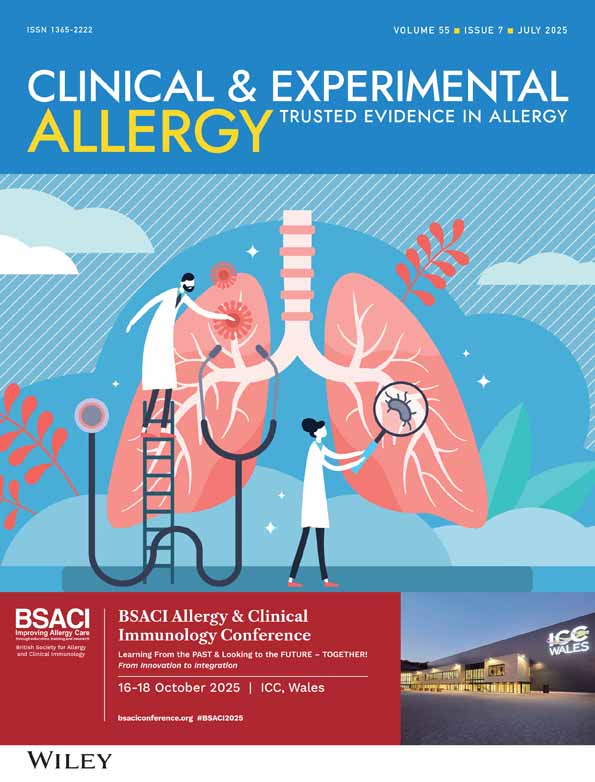Assay of IgE antibodies against June and Timothy grasses by an immunoperoxidase technique
Summary
The results of eighty assays for serum IgE antibodies against June and Timothy grass antigens with a solid-phase immunoperoxidase technique are correlated with those obtained with the RAST procedure. The allergens were insolubilized in polystyrene microtitre plates. After allowing the allergen-specific IgE antibodies in the test serum t o bind the allergen, the plates were incubated with horseradish peroxidase-conjugated rabbit antihuman IgE. The enzyme bound to the plates was assayed spectrophoto-metrically using o-phenylene diamine as the substrate.
The coefficients of variation for within-batch reproducibility ranged from 4.57 to 11.97%, and those for between-batch variance from 8.25 to 13.7%. The slope of absorbance values of the immunoperoxidase assay is shallower than that of the bound radioactivity in the RAST technique. Notwithstanding, the immunoperoxidase method allows separation of non-atopic controls from the sera containing specific IgE antibodies and categorization of positive sera into weakly, moderately, and strongly positive results. Free of the disadvantages inherent in the use of radioactive material, this assay offers an alternative to the RAST test for the assay of allergen-specific IgE antibodies.




